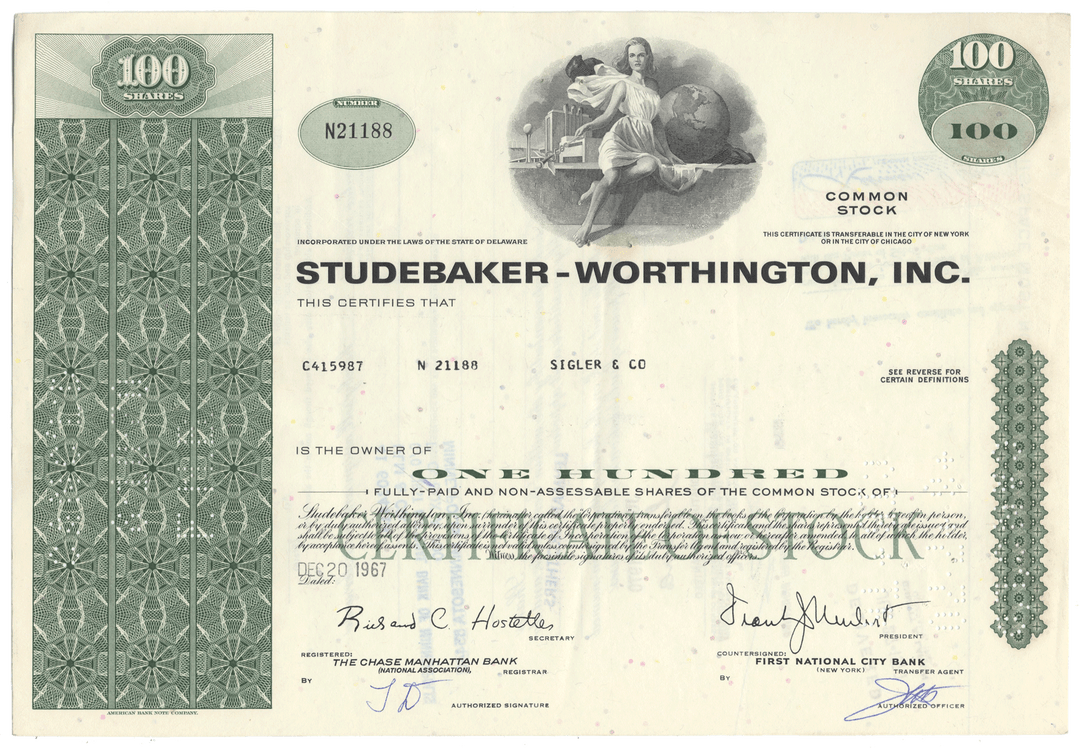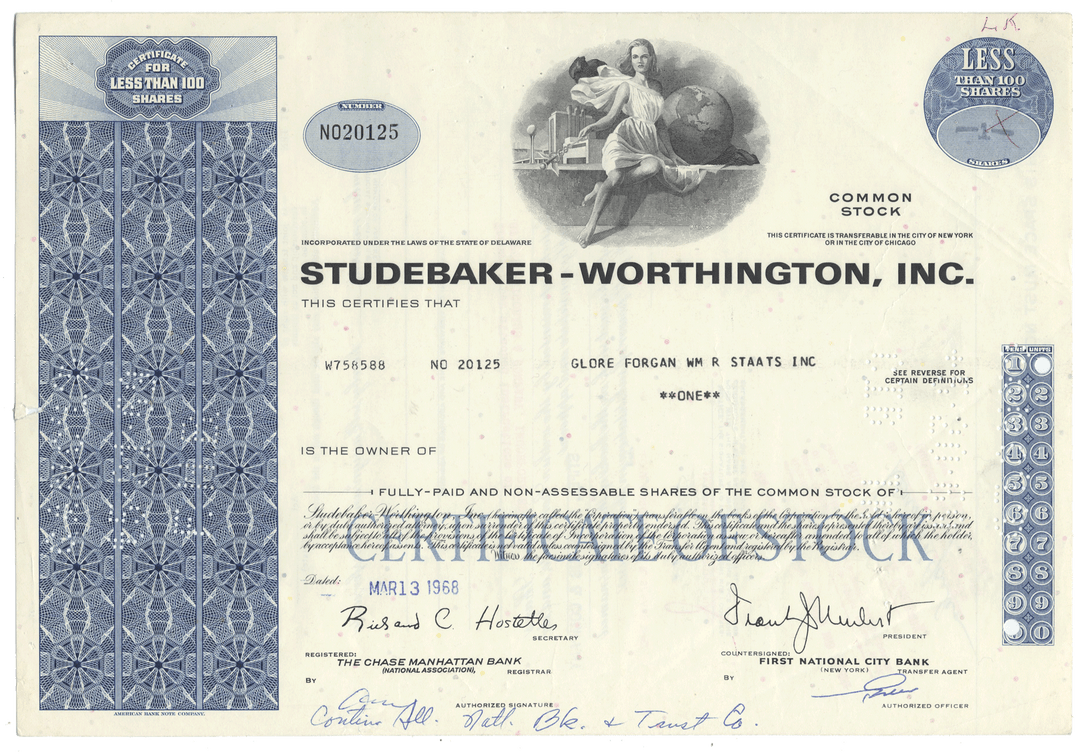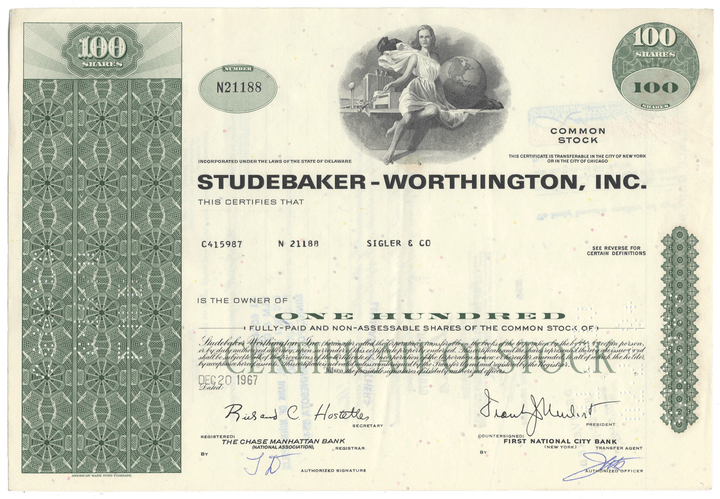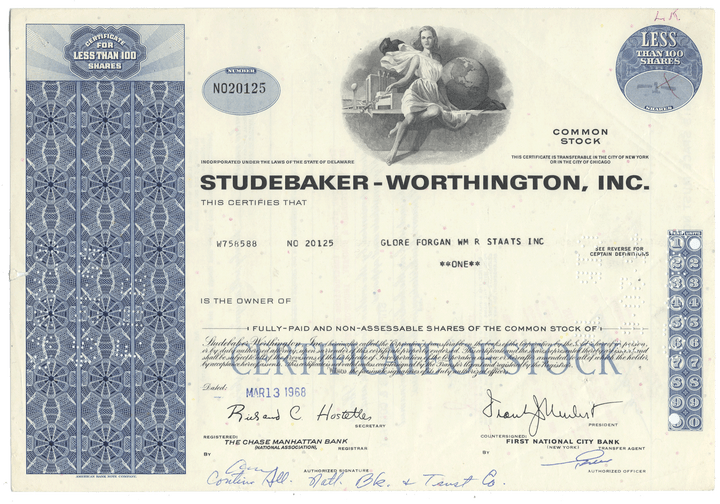Studebaker-Worthington, Inc.
- Guaranteed authentic document
- Orders over $75 ship FREE to U. S. addresses
Product Details



Studebaker-Worthington, Inc.
Certificate Type
Common Stock
Date Issued
March 13, 1968 (blue)
December 20, 1967 (green)
Canceled
Yes
Printer
American Bank Note Company
Signatures
Machine printed
Approximate Size
12" (w) by 8" (h)
Additional Details
NA
Historical Context
Studebaker was once a strong automobile manufacturer, but sales had been steadily declining. In December 1963 Randolph H. Guthrie, chairman of Studebaker, announced that the company was closing down its automobile factory in South Bend Indiana, where it had made cars for 50 years, but would continue to make cars in Hamilton, Ontario. In 1965 auto sales were slightly less than $45 million. On March 4, 1966 Studebaker announced termination of its car production. So far that year only 2,045 cars had been produced. Management said the decision was due to "heavy and irreversible losses" in the automobile division.
Business results for 1966 had total sales of $172 million, excluding automobile sales. Automobile sales for 1965 had been slightly less than $45 million. Net income for 1966 was $16.4 million, much more than the previous year. The company was now profitable, and also had tax loss carry-forwards that made it an attractive target for a takeover. Studebaker further improved its position by selling off some unprofitable businesses. The most profitable of the divisions that remained were Clarke Floor Machines, Gravely Tractor, Schaefer Chemical Compounds (later to become STP Corporation) and Onan.
The 1967 merger that created the company was arranged by the entrepreneur Derald Ruttenberg, who took the risk of buying Studebaker despite the liabilities that came with it, including dealer warranties and union agreements. He saw that Onan generators and STP engine additives were healthy businesses. The large tax loss was also valuable. Worthington was expected to continue to earn steady profits, but could use the tax loss to avoid paying taxes.
The stockholders of Studebaker and Worthington approved the merger despite rumors that the Federal Trade Commission considered the merger would be "substantially anti-competitive". The combined 1966 gross revenues of the two companies had been $672 million, with net income of $24.5 million. Studebaker was acquired by Wagner Electric, which in turn was merged with Worthington Corporation to create Studebaker-Worthington. The merger was completed in November 1967, creating a company with $550 million of assets. The combined company included the profitable divisions from Studebaker, brake and electrical automobile component manufacturing from Wagner Electric, and diverse operations from Worthington that included manufacture of construction equipment, valves and power generation plant.
Related Collections
Additional Information
Certificates carry no value on any of today's financial indexes and no transfer of ownership is implied. All items offered are collectible in nature only. So, you can frame them, but you can't cash them in!
All of our pieces are original - we do not sell reproductions. If you ever find out that one of our pieces is not authentic, you may return it for a full refund of the purchase price and any associated shipping charges.









